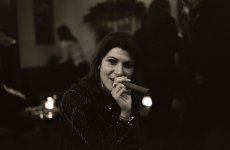R
Robert
Guest
I read on the internet and magazines that the only way to get the best from a Leica is to use slow film and mount the camera on a tripod.
Reading Edwin Puts review 4 on the M8 he has done this to compare an M8 to a film Leica. Using 20 ASA B&W film, the results are stunning with more detail than the M8.
I usually use HP5 and the results obtained would look no different from any reasonable camera.
To achieve excellent results from a camera going the tripod way, would it not just be as handy using medium format equipment like a Mamiya 7.
Reading Edwin Puts review 4 on the M8 he has done this to compare an M8 to a film Leica. Using 20 ASA B&W film, the results are stunning with more detail than the M8.
I usually use HP5 and the results obtained would look no different from any reasonable camera.
To achieve excellent results from a camera going the tripod way, would it not just be as handy using medium format equipment like a Mamiya 7.

